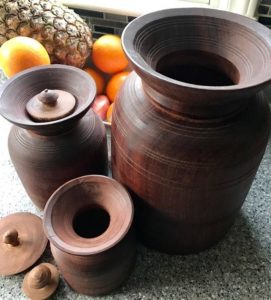Theki and Madani – the traditional butter making process in Nepal
With thousand-year-old cultures and diverse ancient regimes, Nepali lifestyles have always been fascinating. Time is changing so in Nepal, in recent times Nepali lifestyle had seen a gigantic shift with the intervention of modern routines in upbringing.
These days’ traditional equipment and devices we used on daily basis are being replaced by modern technology. In Kathmandu valley, local technologies persist in making statue and pottery. Whereas in the Hilly region, carpet, plague, water grind mill are the prevailing technology. The shift is overwhelming as well as saddening at the same time. Why? Well! Because this change has caused the old Nepali values to lose luster and at the same time has allowed coming face to face with the boons of having a contemporary way of life.
This is one good thing, however, we really miss that wonderful traditional stuff which was part and parcel of our childhood. These are directly connected to the lifestyle of every Nepali. Being an agricultural country many technologies are in practice for many years in Nepal.
Butter making process is an art and science. It’s not magic, but the experience of churning cream to obtain soft, smooth, fresh, butter is magical! Born in Nepal, it is instilled in us that milk, cream, butter, yogurt, buttermilk are the part of our life, and good for health.
Here we present the local tradition of making butter in Nepal with THEKI AND MADANI.

Using the Theki to Churn Buttermilk
Theki is the biggest of all devices used in churning butter and is the basic foundational device used. Cylindrical in shape at the body, it has a narrow neck while the mouth is a spreading fan-like structure. It is most commonly made up of darigitho wood. It is usually used to store milk fat and make butter out of it which can later be cooked to make the clarified butter also known as ghee and also make buttered milk. The “Theki” is only a vessel, whereas the “Madani” is like a thick stick with turbines at one end.
To make all these products we first need to keep the “Theki and Madani” near a pillar so that Madani can be tied very loosely (in fact right parallel to the pillar). The “Madani” is then wrapped around spirally by another rope in such a manner that when you pull one side the other gets smaller (if that makes sense just like a hand exercise). The curd accumulated over a period of few days is brought and collected in the Theki.

The “Madani” is then kept inside the “Theki” with milk fat in it. Slowly the person starts to rotate the “Madani” until the butter separates from the curd. As there are turbines present it works like a mixer grinder and separates the fat and the buttered milk. The addition of hot water in the middle of the process can fasten the process.
This chum-staff moves in alternate rotational movements caused by the pulling of a leather strap which is wound around the axle of the beater. The fat floats on the top which are collected both ready to eat or make clarified butter and the buttered milk remains at the bottom are usually sour but thoroughly enjoyed by everyone.
In Short,
1. Use Theki- a wooden tub and a Madani – a stirrer.
2. Separate butter oil from raw milk to preserve milk fat.
Butter is not rinsed, but it is immediately heated to make butter oil. Butter melts immediately and will start to bubble when it is heated. A clear, liquid butter oil is formed when the bubbling stops. It is said that butter oil can keep for several years at room temperature. It has become a valuable seasoning used to flavor dishes. As in whole, butter churning is an important part of Nepalese livelihood. Not only a part of a day to day activity, but it is also a component of the traditional culture and identity of Nepalese society.
Theki in Nepal is considered sacred, it is not washed with other utensils and people generally do not touch a Theki while they are eating or with the same hand with which you have had non- vegetarian food. The reason for that is once the butter is extracted, it is offered to God over a burning heap of coal, which releases a nice buttery aroma purifying the whole house.

This characteristic of the milk processing technique transcending the framework of ethnic groups and shared in a region. Some people might never know how much calories are burned to Make Ghee/Butter by this process. Later, this cream is collected and eaten by mixing with rice or Htsampa (Htsampa refers to roasted barley flour).

Theki and Madani now are turning out to be an antique household item; very few houses in the villages have it. We don’t think people living in the cities own it anymore. If you are planning to acquire one then we strongly recommend you do so. If you don’t intend to use it at all or would want to use it occasionally, it will make for a good antique showpiece in your living room or any other part of your house.









Leave a Reply